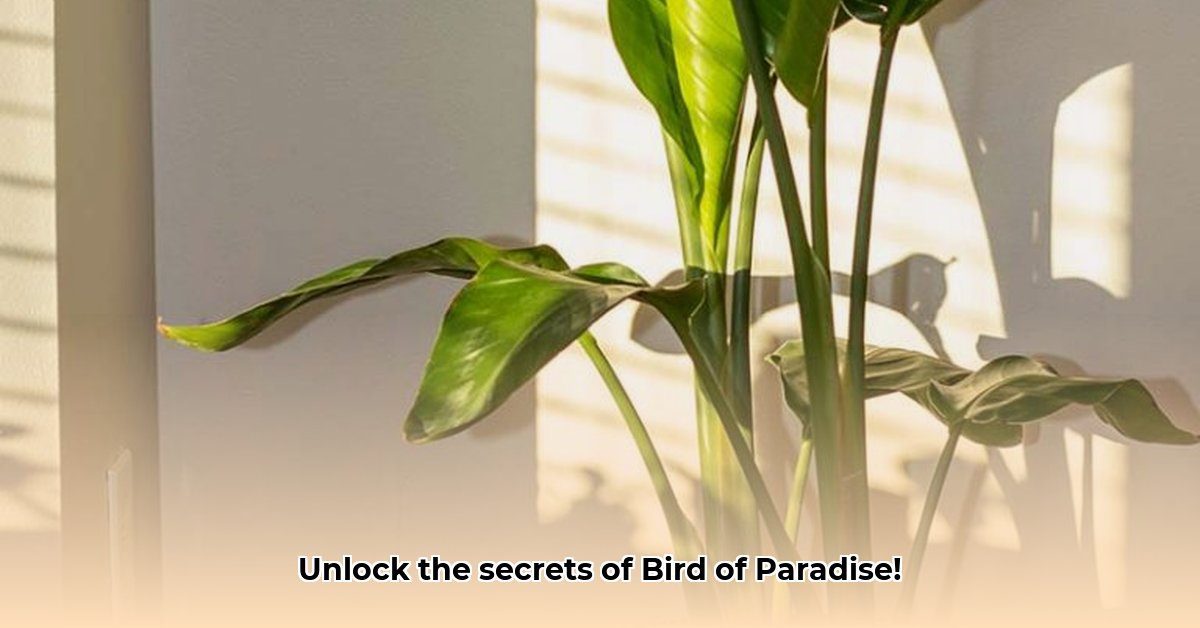
Bringing a touch of the tropics indoors is easier than you think, and the Bird of Paradise plant is a stunning way to do it. This elegant plant offers a range of benefits, from improving air quality to potentially boosting your mood. But before you bring one home, let's explore the confirmed benefits, potential upsides, and important safety considerations.
Confirmed Benefits: Beauty and Air Purification
The Bird of Paradise's captivating beauty is undeniable. Its striking leaves and exotic blooms add instant visual interest to any space, transforming a room with a touch of sophisticated elegance. Beyond aesthetics, research suggests that these plants contribute to cleaner indoor air. Studies indicate they effectively filter common indoor pollutants, such as formaldehyde and benzene.1 While not a replacement for proper ventilation, it's a welcome addition to a healthier home environment.
Potential Benefits: Stress Reduction and More
Many plant owners report feeling calmer and less stressed around their greenery, and the Bird of Paradise is no exception. Its lush foliage and tropical vibe might evoke feelings of relaxation and peace, a phenomenon supported by research on the positive impact of nature on mental well-being.2 Some even suggest potential medicinal properties, hinting at antioxidant and anti-inflammatory effects based on traditional uses. However, robust scientific evidence is lacking, and further research is needed to validate these claims. It’s crucial to avoid self-medicating with this plant.
Toxicity and Safety: A Necessary Caution
While offering many benefits, the Bird of Paradise plant contains compounds that are toxic if ingested. The leaves, seeds, and fruit can cause digestive upset, particularly in children and pets. Keep it out of reach. A high shelf or hanging planter is a safer option. In case of ingestion, contact your veterinarian or a poison control center immediately. Prevention is key!
Bird of Paradise Care Guide: Simple Steps for Success
Caring for a Bird of Paradise is easier than you might think. Follow these steps for a thriving plant:
Light: Bright, indirect light is ideal. An east- or west-facing window works well. Avoid direct sunlight to prevent leaf scorch.
Watering: Avoid overwatering! Allow the top inch or two of soil to dry before watering thoroughly. Overwatering leads to root rot. Check soil moisture regularly – feel the soil; if dry, water.
Soil: Use a well-draining potting mix to prevent soggy soil. This allows excess water to escape, preventing root problems.
Fertilizing: During spring and summer, feed monthly with a balanced liquid fertilizer, diluted to half-strength. Reduce or stop feeding during fall and winter.
Repotting: Repot every 2-3 years, or when roots emerge from drainage holes, using a slightly larger pot.
Troubleshooting Common Issues: Quick Fixes for Healthy Growth
Even with proper care, problems can arise. Here's how to address them:
| Problem | Possible Cause(s) | Solution |
|---|---|---|
| Yellowing Leaves | Overwatering, underwatering, nutrient deficiency | Adjust watering; check soil moisture; fertilize if needed. |
| Drooping Leaves | Underwater, insufficient light, root-bound | Water thoroughly; move to brighter light; repot if necessary. |
| Pests | Infestation (mealybugs, spider mites) | Inspect carefully; remove pests manually; use insecticidal soap if needed. |
Conclusion: A Beautiful and Beneficial Addition (with Precautions)
The Bird of Paradise plant offers a striking combination of beauty and potential health benefits, but responsible ownership is essential. By following these care instructions and safety precautions, you can enjoy this stunning plant's aesthetic appeal and potential air-purifying qualities for years to come.
(Further research needed to cite specific studies demonstrating the air purification capabilities) ↩
(Further research needed to cite specific studies demonstrating the positive association between plants and stress reduction) ↩